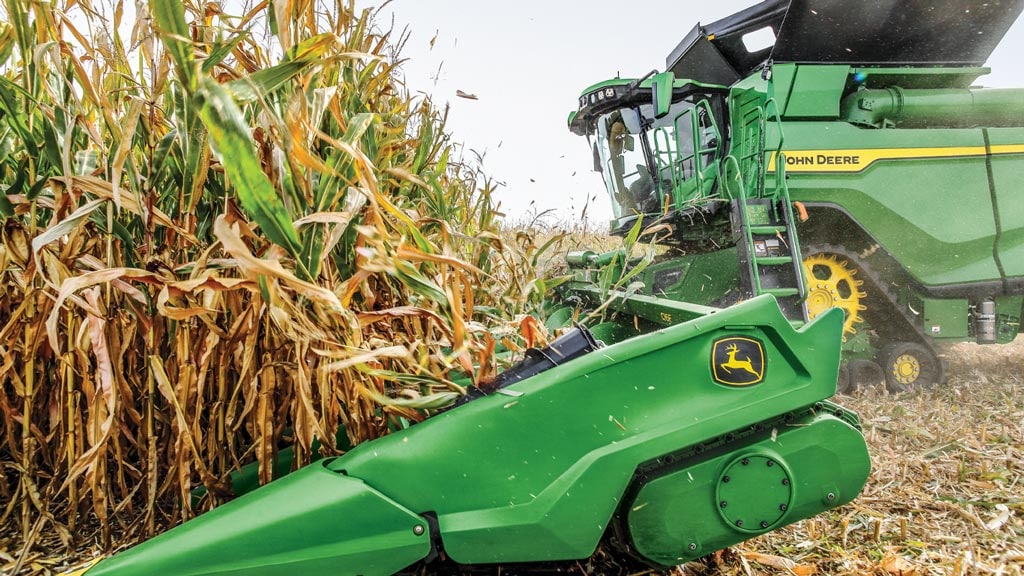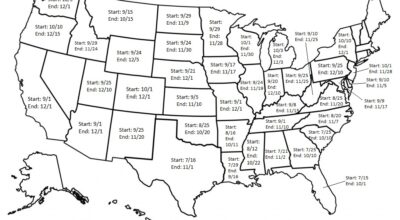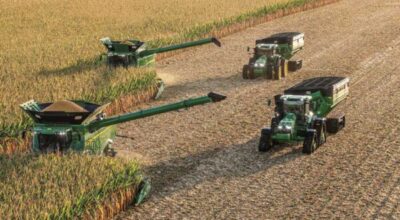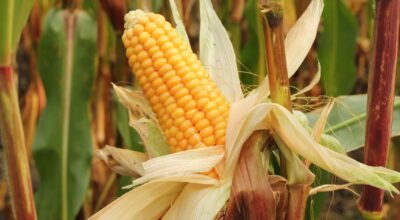As the summer comes to a close, farmers are getting ready for corn harvest. And while this time of year is exciting, it often brings a seemingly endless list of things that can be thrown off by the smallest bump in the road. Despite potential problems or even less than ideal weather conditions, it is crucial farmers remain vigilant to achieve a successful harvest season.
Corn Harvest History, Information & Statistics
As spring fades into summer, it’s time to start thinking about crop planting season, especially when it comes to corn. Corn must be planted two weeks after the last frost date in spring and because it takes a while to grow, producers should get corn planted as early as possible. Let’s take a look at the different types of corn, harvest dates, and more.
Types of Corn
There are at least six popular types of corn that are planted and harvested every year. Here are the different kinds:
- Dent Corn: This type of corn has kernels that have indentations on their tops. They contain soft, starchy corn under the dented tops.
- Flint Corn: Flint corn has very hard kernels that are tough to grind when dried.
- Flour Corn: This corn has soft kernels which are easy to grind.
- Popcorn kernels: This type bursts open when heated.
- Pod Corn: Pod corn produces tiny husks on which grow multicolored kernels.
- Sweet Corn: This kind of corn is extremely popular, and differs from other types of corn because the kernels do not have the ability to convert sugar into starch.
Corn Harvest Dates
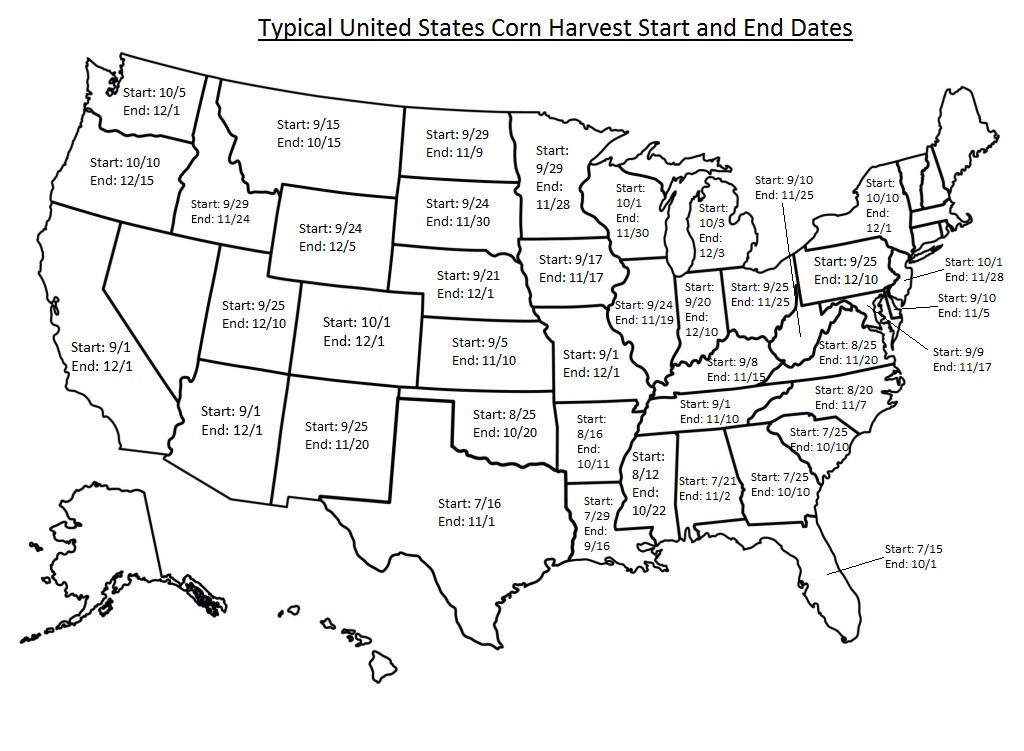
The data in the above map is based on the United States Department of Agriculture’s “Usual Planting and Harvesting Dates for U.S. Field Crops” report. Below, find the average corn harvesting times by state.
- AL: 7/21 – 11/2
- AZ: 9/1 – 12/1
- AR: 8/16 – 10/11
- CA: 9/1 – 12/1
- CO: 10/1 – 12/1
- DE: 9/10 – 11/5
- FL: 7/15 – 10/1
- GA: 7/25 – 10/10
- ID: 9/29 – 11/24
- IL: 9/24 – 11/19
- IN: 9/20 – 12/10
- IA: 9/17 – 11/17
- KS: 9/2 – 11/10
- KY: 9/8 – 11/15
- LA: 7/29 – 9/16
- MD: 9/9 – 11/17
- MI: 10/3 – 12/3
- MN: 9/28 – 11/28
- MS: 8/12 – 10/22
- MO: 9/1 – 12/1
- MT: 9/15 – 10/15
- NE: 9/21 – 12/1
- NJ: 10/1 – 11/28
- NM: 9/25 – 11/20
- NY: 10/10 – 12/1
- NC: 8/20 – 11/7
- ND: 9/29 – 11/9
- OH: 9/25 – 11/25
- OK: 8/25 – 10/20
- OR: 10/10 – 12/15
- PA: 9/25 – 12/10
- SC: 7/25 – 10/10
- SD: 9/24 – 11/30
- TN: 9/1 – 11/10
- TX: 7/16 – 11/1
- UT: 7/25 – 12/10
- VA: 8/25 – 11/20
- WA: 10/5 – 12/1
- WV: 9/10 – 11/25
- WI: 10/1 – 11/30
- WY: 9/24 – 12/5
Corn Harvest Stats to Know
- Corn is grown in over 400,000 United States farms.
- The U.S. corn crop acreage could potentially cover all of Germany.
- Farmers choose to grow corn on every single continent – except for Antarctica.
- There are over 3,500 different individual uses for corn-specific products.
- Every year, a single U.S. farmer can provide food and fiber for about 129 people.
- Each American consumes 25 lbs. of corn per year on average.
- The top states who harvest the most acres of corn for grain on a yearly basis include:
- Iowa: 12,540,000 acres
- Illinois: 10,800,000 acres
- Nebraska: 8,300,000 acres
- Minnesota: 6,950,000 acres
- Indiana: 5,450,000 acres
- South Dakota: 3,700,000 acres
- Wisconsin: 3,000,000 acres
- Ohio: 2,750,000 acres
- Missouri: 2,650,000 acres
- Kansas: 2,350,000 acres
Considerations & Tips for a Successful Corn Harvest
When it comes to growing corn, there are many things to consider in order to have a successful harvest. Let’s take a look at some of these considerations.
Colder Climates
If you experience colder climates each year during the winter, you’ll want to plant your corn as early as possible. Considering using varieties of corn that mature quickly will help you have the ability to harvest before fall frost begins.
Soil Temperatures
For successful germination, ground temperatures will need to be above 60°F. One way you can speed up the process of germination in colder areas is by warming the ground with black plastic coverings. Seeds can be planted through the holes in the covers.
Make Sure Parts are in Good Condition
It is crucial to check and make sure your machine parts are in good condition. You’ll want to look out for excessive rust, as well as sharp or jagged edges, missing pieces, and more.
Check the Settings on your Corn Head Row Unit
The corn head row-unit deck plates must be set less than 1/8th of an inch wider than a typical cob’s diameter. If the deck plates are set too wide, you may damage the kernels on the cob.
- Fine-Tune your Combine: When fine-tuning your combine, it’s crucial to move the chopper into the windrow position to get an accurate reading of what is coming off of the back end of the rotor. You’ll want to also remove any concave inserts as well as separator grate covers before inserting any separator grate spacers. If the rotor speed or concave spacings are correct, the operator should find busted cobs, or some occasional whole cobs with kernels deattached.
- Adjusting the Cleaning Systems: When adjusting the cleaning systems of John Deere S-Series combines, operators need to first determine which settings and configurations are correct for the job. To obtain the utmost cleaning and grain capturing capacity, it’s crucial to check that the chaffer and sieves have a deep tooth configuration.
Corn Harvesting Equipment, Implements & Attachments
For many, corn is present in almost all parts of daily life. Since corn presents itself as such an important aspect of everyday life, it is crucial to also understand the work that goes into the corn harvest every year. Let’s take a look at some of the equipment used to make this harvest happen every year.
600FC Series Corn Heads
The 600 Series Folding Corn Heads work particularly well with John Deere S-Series combines. Here are some of their main benefits:
- Ease of Transportation & Use: The 608FC corn head is designed for transport on narrow roads as well as one-lane bridges, making it a great option for when transportation may otherwise be a problem. Both headers also have the ability to fold on the spot, helping operators easily move from field to field in less time.
- Increased Harvest Capabilities: The 612FC lets you increase your harvested acres by around 30 acres a day, while also reducing operating costs by 15%.
700FC Series Corn Heads
The 700FC folding corn heads, part of the 700 Series, are two models that corn producers may want to consider utilizing out in the field. Here are some of the main benefits to this model series:
- Hydraulically-Adjustable Deck Plates: These help reduce ear loss, while also maximizing potential yield and minimizing extra material intake.
- AutoTrac RowSense: This is a feature of both 700FC models. This technology combines satellite position data alongside feeler data, which is gathered from the row sensor, so that you can reach greater levels of productivity.
- Intermeshing Stalk Roll Options: These stalk roll options for processing are available for both 700FC models. With this option, stalk material will be sized six inches or longer in order to provide soil protection from wind as well as water. This is ideal for wet harvesting conditions.
Additional Considerations for the 2021 Corn Harvest Season
Corn producers continue to show an interest in utilizing extended crop rotations and degree day tracking to improve overall soil health, as well as deter pests. Here is a look at some of the more in-depth considerations to make for the 2021 harvest season.
Extended Crop Rotation for Improving Soil Health
Members of Iowa State University’s departments of sociology and agronomy have researched farmers’ perspectives on the benefits, as well as the barriers, of extended crop rotations. This research was then published in the Journal of Agricultural and Environmental Letters.
“Before the widespread use of internal combustion engine tractors and synthetic fertilizers and pesticides, extended rotations were key to soil fertility and pest control,” said J. Arbuckle, professor of rural sociology and extension sociologist at Iowa State. “While the shift to a fossil-fuel-based system of cultivation, fertility and pest control reduced labor needs, over time, it has also resulted in unintended consequences such as contaminated water bodies, pesticide resistance, greenhouse gas emissions, and degraded soils. Use of extended rotations could help to reverse some of those harms.”
Overall, the authors determined that extended rotations can have a positive agronomic and environmental impact.
Tracking Degree Days to Avoid Stalk Borers
While there is, unfortunately, no rescue treatment for stalk borers, tracking degree days, while also scouting the field regularly to identify larvae is the most effective course of action for management. If an insecticide must be used, application must be timed to reach exposed larvae before they are able to burrow under the stalk. Producers should begin monitoring the temperatures each day beginning in January.
Corn Harvesting Images

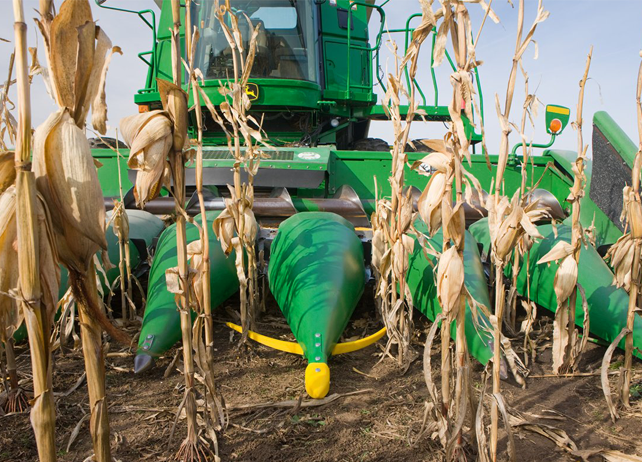
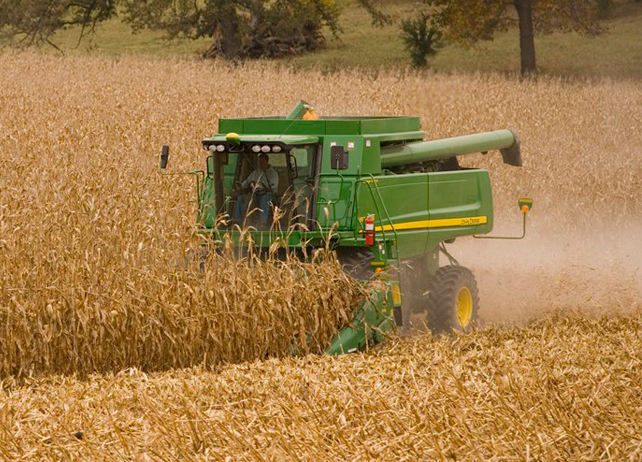
Final Thoughts
Throughout the corn harvest season, it is crucial to not only start by inspecting your harvesting equipment, but also look for ways to improve the efficiency of your harvest year over year.
If you have any questions about John Deere corn harvesting equipment, such as the folding corn head, you can contact your local John Deere dealer.
If you enjoyed this post or want to read others, feel free to connect with us on Facebook, Pinterest, Twitter, or Instagram!
